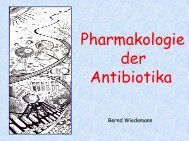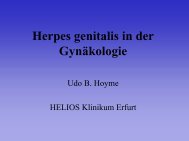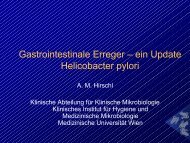EORTC/MSG definitions
EORTC/MSG definitions
EORTC/MSG definitions
You also want an ePaper? Increase the reach of your titles
YUMPU automatically turns print PDFs into web optimized ePapers that Google loves.
Update: New <strong>EORTC</strong> /<strong>MSG</strong><br />
criteria for clinical trials<br />
J Peter Donnelly BSc FIBMS MIBiol PhD<br />
Department of Haematology<br />
Nijmegen University Centre for Infectious Diseases<br />
University Hospital St Radboud<br />
Radboud University Nijmegen<br />
The Netherlands
Defining invasive fungal disease
<strong>EORTC</strong>-IFICG & NIAID-<strong>MSG</strong><br />
2002
Original aims<br />
To improve the ability for both clinicians and<br />
researchers:<br />
• in comparing protocols and outcome of trials<br />
• In assessing reports on therapeutic and diagnostic<br />
interventions<br />
• in eliminating subjective classification
Strengths
Who uses the <strong>EORTC</strong>/<strong>MSG</strong> <strong>definitions</strong>?<br />
Clinical trials<br />
Diagnostic tests
How valuable do you consider the<br />
<strong>EORTC</strong>/<strong>MSG</strong> <strong>definitions</strong>?<br />
100%<br />
90%<br />
80%<br />
70%<br />
60%<br />
50%<br />
40%<br />
30%<br />
20%<br />
10%<br />
0%<br />
very usefulquite usefuldon't knownot very useful quite useless
Better communication
Strengths<br />
<strong>EORTC</strong>/<strong>MSG</strong> <strong>definitions</strong><br />
• have fostered better communication<br />
• have been accepted by major journals<br />
• are being applied by registration authorities<br />
• have been adopted for therapeutic trials<br />
• are used for approving diagnostic tests
• Why revise?<br />
• The process<br />
• Definitions II
• Why revise?<br />
• The process<br />
• Definitions II
Limitations
Problems<br />
INAPPROPRIATE USE<br />
• applied for clinical uses<br />
• patients without cancer
Problems<br />
INAPPROPRIATE USE<br />
• applied for clinical uses<br />
• patients without cancer<br />
APPROPRIATE USE<br />
• no criteria for endemic mycoses, fusariosis<br />
• host factors too vague<br />
• clinical features given equal weight<br />
• insecurity about Aspergillus antigen<br />
• PCR not included
Patient groups at risk of developing<br />
IFD<br />
Haematological malignancy<br />
Allogeneic HSCT<br />
Invasive fungal disease
Goal of adapting <strong>definitions</strong><br />
proven<br />
probable<br />
possible<br />
present
Goal of adapting <strong>definitions</strong><br />
proven<br />
proven<br />
probable<br />
probable<br />
possible<br />
present<br />
possible<br />
future
Question<br />
Host<br />
factor<br />
neutropenic<br />
+<br />
Clinical<br />
features<br />
Halo sign on pulmonary CT<br />
Diagnosis?<br />
+<br />
Mycology<br />
Blood & BAL: Galactomannan -ve<br />
Blood: PCR positive<br />
1.possible invasive aspergillosis.<br />
2.probable invasive aspergillosis.<br />
3.proven invasive aspergillosis.<br />
4.possible invasive fungal infection
Answer<br />
Host<br />
factor<br />
neutropenic<br />
+<br />
Clinical<br />
features<br />
Halo sign on pulmonary CT<br />
Diagnosis<br />
+<br />
Mycology<br />
Blood & BAL: Galactomannan -ve<br />
Blood: PCR positive<br />
1.possible invasive aspergillosis.<br />
2.probable invasive aspergillosis.<br />
3.proven invasive aspergillosis.<br />
4.possible invasive fungal infection
• Why revise?<br />
• The process<br />
• Definitions II
ICAAC 43 Chicago 2003<br />
a) the need for the rules for defining IFI to be clear and<br />
consistent was of paramount importance<br />
b) proven invasive fungal infection (IFI) does not<br />
require the presence of a host factor as such<br />
c) for probable IFI the host factors should be expanded<br />
to include<br />
• solid organ transplants<br />
• HIV infection<br />
• hereditary immunodeficiencies<br />
• connective tissue disorders<br />
• low birth-weight (
ICAAC 43 Chicago 2003<br />
e) PROVEN, PROBABLE and POSSIBLE should remain as<br />
categories for IFI<br />
f) probable IFI will continue to require that all three<br />
elements should be present and therefore is defined<br />
as host factors AND clinical features AND mycological<br />
evidence<br />
g) the <strong>definitions</strong> for proven IFI will remain unchanged.<br />
The principle is that the criteria for proven or<br />
probable IFI have to be met in full in order to assign<br />
a level of certainty.
ICAAC 43 Chicago 2003 - working parties<br />
Group<br />
Candidiasis<br />
Aspergillosis and<br />
infections due to<br />
other moulds<br />
Cryptococcosis<br />
Endemic mycoses<br />
Task<br />
new criteria for candidaemia<br />
Imaging, galactomannan, BAL<br />
to review the criteria<br />
to review the criteria
Working parties - 1 year later<br />
Group<br />
Candidiasis<br />
Aspergillosis and<br />
infections due to<br />
other moulds<br />
Cryptococcosis<br />
Endemic mycoses<br />
Task<br />
-<br />
-<br />
-<br />
completed
QuickTime and a<br />
TIFF (Uncompressed) decompressor<br />
are needed to see this picture.<br />
The best laid schemes o' Mice an' Men,<br />
Gang aft agley,<br />
An' lea'e us nought but grief an' pain,<br />
For promis'd joy!<br />
(The best laid schemes of Mice and Men<br />
often go awry,<br />
And leave us nothing but grief and pain,<br />
For promised joy!)<br />
Robert Burns (1759 - 1796)<br />
QuickTime and a<br />
TIFF (Uncompressed) decompressor<br />
are needed to see this picture.
Head to head
Plan B<br />
Microbiological Criteria.doc<br />
Proven IFI.doc<br />
Host factors.doc<br />
QuickTime and a<br />
TIFF (Uncompressed) decompressor<br />
are needed to see this picture.<br />
Three wise men?
Consensus Group<br />
Consensus group
Round 1<br />
E-mail<br />
E-mail<br />
E-mail<br />
E-mail<br />
Round 2<br />
QuickTime and a<br />
TIFF (Uncompressed) decompressor<br />
are needed to see this picture.
Definitions II process<br />
Round 1<br />
Round 6<br />
Round 5<br />
Ben De Pauw<br />
Tom Walsh<br />
J Peter Donnelly<br />
Sibel Ascioglu<br />
Jacques Bille<br />
Raoul Herbrecht<br />
Bartjan Kullberg<br />
Olivier Lortholary<br />
Johan Maertens<br />
Marcus Ruhnke<br />
Claudio Viscoli<br />
Jack Bennett<br />
Bill Dismukes<br />
Jack Edwards<br />
Kieren Marr<br />
Pete Pappas<br />
Tom Patterson<br />
John Perfect<br />
Jack Sobel<br />
David Stevens<br />
John Wingard<br />
Carol Kauffman<br />
David Denning<br />
Frank Odds<br />
Georg<br />
Masschmeyer<br />
Brahm Segal<br />
Theo Zaoutis<br />
Angela Restrepo<br />
Patricia Munoz<br />
Chris Kibbler<br />
Round 2<br />
Round 3<br />
Round 4
Round ‘em up
QuickTime and a<br />
TIFF (Uncompressed) decompressor<br />
are needed to see this picture.
• Why revise?<br />
• The process<br />
• Definitions II
No change
Proven invasive fungal infective<br />
disease<br />
histology<br />
Tissue<br />
Mycology<br />
Blood culture<br />
culture
Defining invasive fungal disease<br />
Host<br />
factor<br />
Clinical<br />
feature<br />
Mycology
<strong>EORTC</strong>/<strong>MSG</strong><br />
Definitions for invasive fungal disease<br />
2002 - 2007
First change
What’s in a name?<br />
Invasive<br />
Fungal<br />
Infection<br />
2002
What’s in a name?<br />
Invasive<br />
Fungal<br />
Infection<br />
Invasive<br />
Fungal<br />
Disease<br />
2007
Second change
Definitions I - Possible invasive<br />
fungal disease<br />
Clinical<br />
features<br />
Host<br />
factor<br />
+<br />
OR<br />
Mycology<br />
2002
Invasive fungal disease -<br />
Definitions II<br />
microscopy tissue culture<br />
= Proven<br />
Host<br />
Clinical<br />
factors + features +<br />
Mycology<br />
=<br />
Probable<br />
Host<br />
factors<br />
+<br />
Clinical<br />
features<br />
Negative<br />
or<br />
Not done<br />
=<br />
Host<br />
factors<br />
+<br />
Clinical<br />
features<br />
Negative<br />
or<br />
Not done<br />
=<br />
Possible<br />
Host<br />
factors<br />
+<br />
none<br />
Mycology<br />
=<br />
Host<br />
factors<br />
none<br />
Negative<br />
or<br />
Not done<br />
= Not classified
Invasive fungal disease -<br />
Definitions II<br />
microscopy tissue culture<br />
= Proven<br />
Host<br />
Clinical<br />
factors + features +<br />
Mycology<br />
=<br />
Probable<br />
Host<br />
factors<br />
Host<br />
factors<br />
+<br />
+<br />
Clinical<br />
features<br />
Clinical<br />
features<br />
Negative<br />
or<br />
Not done<br />
Negative<br />
or<br />
Not done<br />
=<br />
=<br />
Possible<br />
Host<br />
factors<br />
Host<br />
factors<br />
+<br />
none<br />
none<br />
Mycology<br />
Negative<br />
or<br />
Not done<br />
=<br />
=<br />
Not classified
Invasive fungal disease -<br />
Definitions II<br />
microscopy tissue culture<br />
= Proven<br />
Host<br />
Clinical<br />
factors + features +<br />
Mycology<br />
=<br />
Probable<br />
Host<br />
factors<br />
+<br />
Clinical<br />
features<br />
Negative<br />
or<br />
Not done<br />
=<br />
Possible<br />
Host<br />
factors<br />
+<br />
Clinical<br />
features<br />
Negative<br />
or<br />
Not done<br />
=<br />
Host<br />
factors<br />
+<br />
none<br />
Mycology<br />
=<br />
Not classified<br />
Host<br />
factors<br />
none<br />
Negative<br />
or<br />
Not done<br />
=
Definitions II - Possible invasive<br />
fungal disease<br />
Host<br />
factor<br />
+<br />
Clinical<br />
features<br />
Characteristic of<br />
invasive fungal disease<br />
BUT<br />
no mycological evidence<br />
2007
Third change
Definitions - Host factors<br />
neutropenia neutropenia<br />
> 33 weeks weeks corticosteroids<br />
corticosteroids<br />
10 10 days days neutropenia neutropenia<br />
Host<br />
factor<br />
> 44 days days unexplained unexplained<br />
fever fever despite despite broad broad<br />
spectrum spectrum antibiotics antibiotics<br />
Graft Graft versus versus Host Host Disease Disease<br />
2002
Definitions - Host factors<br />
neutropenia neutropenia<br />
> 33 weeks weeks corticosteroids<br />
corticosteroids<br />
10 10 days days neutropenia neutropenia<br />
Host<br />
factor<br />
> 44 days days unexplained unexplained<br />
fever fever despite despite broad broad<br />
spectrum spectrum antibiotics antibiotics<br />
Graft Graft versus versus Host Host Disease Disease<br />
2007
Definitions - Host factors<br />
neutropenia neutropenia<br />
> 33 weeks weeks corticosteroids<br />
corticosteroids<br />
10 10 days days neutropenia neutropenia<br />
Host<br />
factor<br />
> 44 days days unexplained unexplained<br />
fever fever despite despite broad broad<br />
spectrum spectrum antibiotics antibiotics<br />
Graft Graft versus versus Host Host Disease Disease<br />
2007
Definitions - Host factors<br />
neutropenia neutropenia<br />
> 33 weeks weeks corticosteroids<br />
corticosteroids<br />
Allogeneic Allogeneic HSCT HSCT recipient recipient<br />
Host<br />
factor<br />
Treatment Treatment with with other other recognized recognized<br />
T-cell T-cell immune immune suppressants<br />
suppressants<br />
2007<br />
Inherited Inherited severe severe immunodeficiency<br />
immunodeficiency
Patients at risk of developing IFD<br />
Haematological malignancy<br />
Allogeneic HSCT<br />
Invasive fungal disease<br />
2002
Patients at risk of developing IFD<br />
Haematological malignancy<br />
Allogeneic HSCT<br />
Liver<br />
ICU<br />
Invasive fungal disease<br />
Lung<br />
CGD<br />
2007<br />
Heart<br />
Transplant<br />
Steroids<br />
Renal
Fourth change
Definitions - Clinical features<br />
Lower respiratory tract infection<br />
MAJOR<br />
= 1<br />
Chronic disseminated candidiasis<br />
Halo sign<br />
Air-crescent sign<br />
cavity<br />
Bull’s eye lesions in liver or spleen<br />
Sinonasal infection<br />
Radiological evidence<br />
Clinical<br />
feature<br />
CNS infection<br />
Radiological evidence<br />
Disseminated fungal infection<br />
Unexplained papular or nodular skin lesions<br />
Chorioretinitis<br />
endophthalmitis<br />
2002
Definitions - Clinical features<br />
Lower respiratory tract infection<br />
Cough, chest pain, haemoptysis, dyspnoea<br />
Physical finding of pleural rub<br />
Any new infiltrate not fulfilling major criterion<br />
Sinonasal infection<br />
MINOR<br />
= 2<br />
Clinical<br />
feature<br />
Nasal discharge. stuffiness<br />
Nose ulceration. eschar or epistaxis<br />
Periorbital swelling<br />
Maxillary tenderness<br />
Black necrotic lesions or perforation of the hard-palate<br />
2002<br />
CNS infection<br />
CSF<br />
No pathogens<br />
no malignant cells<br />
abnormal biochemistry<br />
abnormal cell count<br />
Focal neurological<br />
seizures<br />
hemiparesis<br />
cranial nerve palsy<br />
Mental changes<br />
Meningeal irritation
Definitions - Clinical features<br />
Lower respiratory tract IFD<br />
Chronic disseminated candidiasis<br />
Sinonasal IFD<br />
Clinical<br />
feature<br />
CNS IFD<br />
No more major and no more minor<br />
2007
Definitions - Clinical features<br />
Lower respiratory tract IFD<br />
Chronic disseminated candidiasis<br />
Sinonasal IFD<br />
Clinical<br />
feature<br />
CNS IFD<br />
No more major and no more minor<br />
2007
Definitions - Clinical features<br />
Lower respiratory tract IFD<br />
A) the presence of one of the following “specific”<br />
imaging signs on CT:-<br />
• Well defined nodule(s) with a halo sign<br />
• Well defined nodule(s) without a halo sign<br />
• Wedge-shaped infiltrate<br />
• Air crescent sign<br />
• Cavity<br />
2007
Specific pulmonary infiltrates on CT scan<br />
nodules<br />
halo sign<br />
cavity<br />
air crescent sign
Definitions - Clinical features<br />
Lower respiratory tract IFD<br />
B) the presence of a new non-<br />
specific focal infiltrate<br />
PLUS at least one of the following:-<br />
• Pleural rub<br />
• Pleural pain<br />
• Hemoptysis<br />
2007
Fifth change
Definitions - Mycology<br />
Culture of mould from tissue. aspirate BAL or sputum<br />
antigen in blood, BAL, CSF<br />
mould seen in sinus aspirate<br />
Mycology<br />
Fungi seen in tissue or sterile body fluids<br />
2002
Definitions - Mycology<br />
Culture of mould from tissue. aspirate BAL or sputum<br />
antigen in blood, BAL, CSF<br />
mould seen in sinus aspirate<br />
Mycology<br />
Beta-D-glucan in BAL, CSF or blood<br />
Fungi seen in tissue or sterile body fluids<br />
2007
Definitions - Mycology<br />
Culture of mould from tissue. aspirate BAL or sputum<br />
antigen in blood, BAL, CSF<br />
mould seen in sinus aspirate<br />
Mycology<br />
Beta-D-glucan in BAL, CSF or blood<br />
Fungi seen in tissue or sterile body fluids<br />
2007
Definitions - Mycology<br />
Culture of mould from tissue. aspirate BAL or sputum<br />
antigen in blood, BAL, CSF<br />
mould seen in sinus aspirate<br />
Mycology<br />
Beta-D-glucan in BAL, CSF or blood<br />
Fungi seen in tissue or sterile body fluids<br />
2007<br />
PCR to detect nucleic acid<br />
Not until a PCR system is<br />
developed that has been<br />
externally validated for blood,<br />
tissue, or BAL fluid
Towards a European standard for<br />
Aspergillus PCR<br />
Laboratory<br />
Working party<br />
Jurgen Loeffler<br />
Stephane Bretagne<br />
Willem Melchers<br />
Lewis White<br />
Niklas Finnström<br />
Steering<br />
committee<br />
J Peter Donnelly<br />
Clinical<br />
Working party<br />
Rosemary Barnes<br />
Werner Heinz<br />
Lena Klingspor<br />
Johan Maertens<br />
Catherine Cordonnier
Slicing the cake
Separating the chaff from the wheat<br />
patients at risk<br />
proven/probable IFD
Separating the chaff from the wheat<br />
patients at risk<br />
Host factors<br />
proven/probable IFD
Separating the chaff from the wheat<br />
patients at risk<br />
Host factors<br />
clinical<br />
proven/probable IFD
Separating the chaff from the wheat<br />
patients at risk<br />
Host factors<br />
mycology<br />
clinical<br />
proven/probable IFD
Screening test for a potentially fatal<br />
disease with a low prevalence<br />
ruled out<br />
withhold treatment<br />
Controls<br />
+<br />
Tests<br />
- -<br />
-<br />
±<br />
+<br />
not ruled out<br />
start treatment
Do you apply <strong>EORTC</strong>/<strong>MSG</strong> <strong>definitions</strong> in<br />
daily practice?<br />
70%<br />
60%<br />
50%<br />
40%<br />
30%<br />
20%<br />
10%<br />
0%<br />
all the timemost of the time occasionallyseldom<br />
never
Scheme for managing high-risk patients<br />
Patient
Scheme for managing high-risk patients<br />
Patient<br />
Clinical evidence of IFD<br />
yes<br />
no
Scheme for managing high-risk patients<br />
Patient<br />
Clinical evidence of IFD<br />
yes<br />
no<br />
Culture +<br />
Galactomannan +<br />
Microbiological evidence of IFD
Scheme for managing high-risk patients<br />
Patient<br />
Clinical evidence of IFD<br />
yes<br />
no<br />
Culture +<br />
Galactomannan +<br />
Microbiological evidence of IFD<br />
yes<br />
“Probable”<br />
IFD
Scheme for managing high-risk patients<br />
Patient<br />
Clinical evidence of IFD<br />
yes<br />
no<br />
Culture +<br />
Galactomannan +<br />
Microbiological evidence of IFD<br />
yes<br />
no<br />
“Probable”<br />
IFD<br />
“Possible”<br />
IFD
Scheme for managing high-risk patients<br />
Patient<br />
Clinical evidence of IFD<br />
yes<br />
no<br />
Culture +<br />
Galactomannan +<br />
Microbiological evidence of IFD<br />
yes<br />
no<br />
yes<br />
no<br />
“Probable”<br />
IFD<br />
“Possible”<br />
IFD<br />
“Unlikely” IFD
<strong>EORTC</strong>/<strong>MSG</strong> <strong>definitions</strong> - aspergillosis<br />
Host<br />
factor<br />
Clinical<br />
features<br />
Mycology<br />
HSCT<br />
+<br />
+<br />
antigenaemia<br />
Halo sign on CT scan<br />
Probable
<strong>EORTC</strong>/<strong>MSG</strong> <strong>definitions</strong> - aspergillosis<br />
Host<br />
factor<br />
Clinical<br />
features<br />
Mycology<br />
HSCT<br />
+<br />
+<br />
none<br />
Halo sign on CT scan<br />
Probable<br />
(modified criteria)
<strong>EORTC</strong>/<strong>MSG</strong> <strong>definitions</strong> - aspergillosis<br />
Host<br />
factor<br />
Clinical<br />
features<br />
Mycology<br />
HSCT<br />
+<br />
+<br />
none<br />
Halo sign on CT scan<br />
possible
For example..<br />
CID 2007:44 (15 May) • Cornely et al.
Table 2. Favorable overall responses among all<br />
patients and subsets of patients.<br />
Percentage of patients with favorable overall<br />
response by liposomal amphotericin B dosage<br />
Patient group or characteristic<br />
3 mg/kg<br />
per day<br />
10 mg/kg<br />
per day<br />
Difference, %<br />
All patients a 50 46<br />
4<br />
All patients with aspergillosis<br />
Patients with microbiologically confirmed<br />
aspergillosis<br />
Patients with aspergillosis diagnosed by presence of<br />
halo sign only<br />
Allogeneic stem cell transplantation<br />
Yes<br />
No<br />
Hematological malignancy<br />
Controlled<br />
Uncontrolled<br />
Neutropenia at baseline<br />
Yes<br />
No<br />
Pulmonary infection<br />
Extrapulmonary infection<br />
50<br />
39<br />
56<br />
47<br />
50<br />
53<br />
48<br />
46<br />
42<br />
48<br />
50<br />
45<br />
54<br />
44<br />
43 42<br />
1<br />
67 57<br />
10<br />
51 48<br />
3<br />
CID 2007:44<br />
33<br />
(15<br />
30<br />
May) • Cornely et<br />
3<br />
al.<br />
4<br />
3<br />
8<br />
3<br />
5<br />
1<br />
4
Table 2. Favorable overall responses among all<br />
patients and subsets of patients.<br />
Patient group or characteristic<br />
All patients a<br />
All patients with aspergillosis<br />
Patients with microbiologically<br />
confirmed aspergillosis<br />
Patients with aspergillosis diagnosed<br />
by presence of halo sign only<br />
Percentage of patients with<br />
favorable overall response by<br />
liposomal amphotericin B dosage<br />
Difference,<br />
%<br />
3<br />
mg/kg<br />
per day<br />
50<br />
50<br />
39<br />
56<br />
10<br />
mg/kg<br />
per day<br />
46<br />
46<br />
42<br />
48<br />
4<br />
4<br />
3<br />
8<br />
probable<br />
CID 2007:44 (15 May) • Cornely et al.
Table 2. Favorable overall responses among all<br />
patients and subsets of patients.<br />
Patient group or characteristic<br />
All patients a<br />
All patients with aspergillosis<br />
Patients with microbiologically<br />
confirmed aspergillosis<br />
Patients with aspergillosis diagnosed<br />
by presence of halo sign only<br />
Percentage of patients with<br />
favorable overall response by<br />
liposomal amphotericin B dosage<br />
Difference,<br />
%<br />
3<br />
mg/kg<br />
per day<br />
50<br />
50<br />
39<br />
56<br />
10<br />
mg/kg<br />
per day<br />
46<br />
46<br />
42<br />
48<br />
4<br />
4<br />
3<br />
8<br />
possible<br />
CID 2007:44 (15 May) • Cornely et al.
At risk population<br />
proven<br />
probable<br />
unclassified<br />
possible
Currently eligible<br />
proven<br />
probable
Eligible for future studies<br />
proven<br />
probable<br />
possible
Conclusion<br />
• The revised <strong>definitions</strong> should make trials<br />
simpler and more represenatative<br />
• Much still needs to be done in the ICU<br />
• PCR needs to come into lineFailure to<br />
meet the <strong>definitions</strong> does NOT mean there<br />
is no IFD ….<br />
only that the criteria for<br />
defining IFD have not been met<br />
• Valid until 2009?


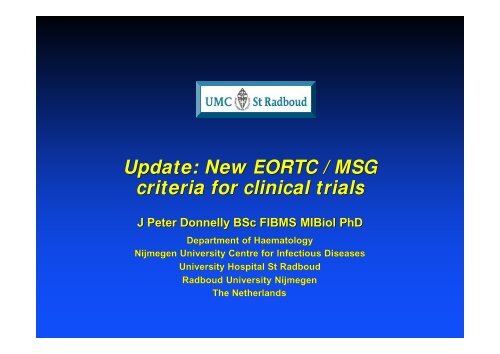
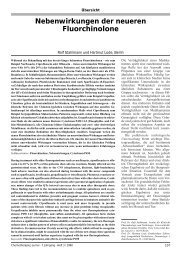
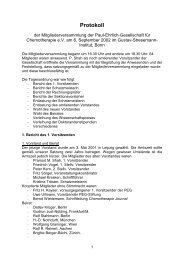
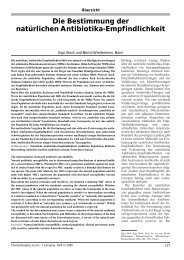

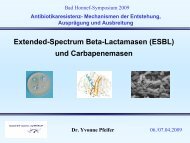
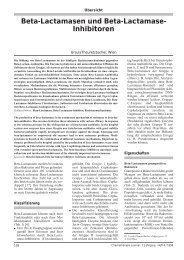
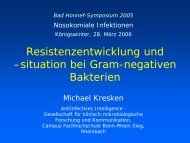

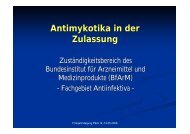
![Willinger.ppt [Schreibgeschützt]](https://img.yumpu.com/25098535/1/190x135/willingerppt-schreibgescha-1-4-tzt.jpg?quality=85)
